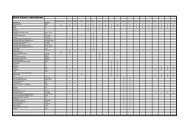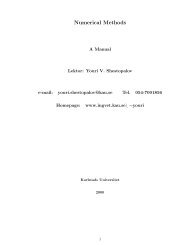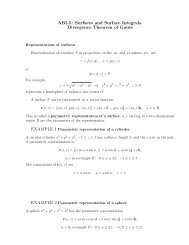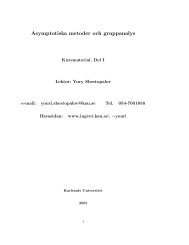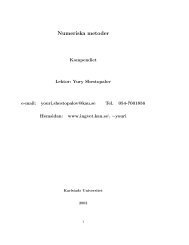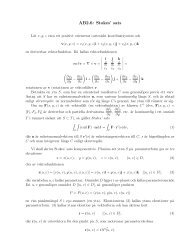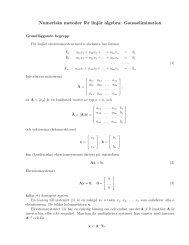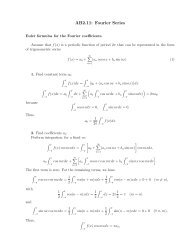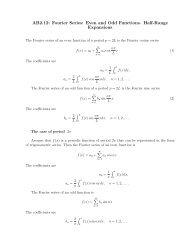Create successful ePaper yourself
Turn your PDF publications into a flip-book with our unique Google optimized e-Paper software.
The same technique can be applied to constructing an approximate solution to the hypersingularequation(H + K)ϕ = ddy∫1−1( 1x − y + K(x, y) )ϕ(x) √ 1 − x 2 dx = f(y), −1 < y < 1. (386)The conditions concerning the smoothness of K(x, y) that guarantee the compactness of integraloperator K are imposed in Section 2.Choose the Chebyshev polynomials of the second kind as the basis and probe functions, i.e.,setX N = {U 0 , . . . , U N−1 }, Y N = {U 0 , . . . , U N−1 }. (387)Unknown approximate solution ϕ N (x) is determined in the formϕ N (x) =N−1 ∑n=0b n U n (x). (388)Note that hypersingular operator H maps X N onto Y N and is bijective.From Lemma 10, it follows that the Galerkin method for operator H converges. By virtueof Lemma 9, this result is also valid for operator H + K under the assumption that K iscompact and H + K is injective. Quasioptimal formula (378) estimates the rate of convergenceof approximate solution ϕ N (x) to exact one ϕ(x), N → ∞ in the norm of space Ŵ 1 2 . Unknowncoefficients a n are found from finite linear system (383).Theorem 48 If operator H + K : Ŵ 1 2 → L (2)2 is injective and K : Ŵ 1 2 → L (2)2 is compact, thenthe Galerkin method (387) converges for operator H + K.82



